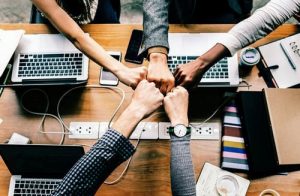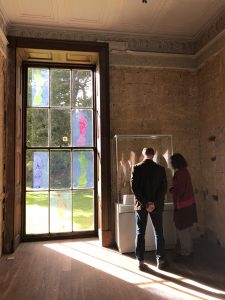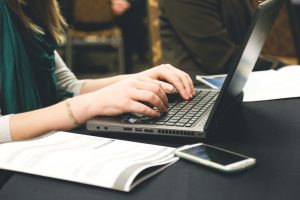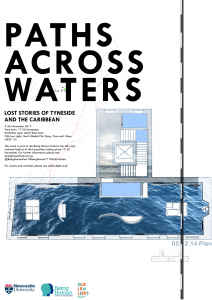Last month saw the first ESRC IAA and Creative Fuse CAKE collaboration over at the Mining Institute in Newcastle. Here Frances Hardcastle from Creative Fuse summarises the main points from the afternoon presentations.
How does the digital affect archive materials? Often when we consider digital archives, we equate this with the process of digitisation – creating a digital copy of an item that can be viewed on a screen and stored on a server. But what if there was more to the digital archive than digitisation? In our 15th Collaboration and Knowledge Exchange (CAKE) event, we explored the changing dynamics between digital and original artefacts, and how the message can complement and be transformed by the medium.
In keeping with our theme, this month’s event blended the grandeur and heritage of the venue with a 21st Century audience; filling the library of the Mining Institute with representatives from the region’s Creative, Digital and IT sector.
Our first speakers were from Animating Text at Newcastle University (ATNU). Professor Jennifer Richards and her colleagues, Professor Michael Rossington, Dr James Cummings and Dr Tiago Sousa Garcia gave a lightening fast introduction to the world of digital scholarly editing and the pioneering work taking place at Newcastle University.
The team explained that animating text is nothing to do with film animation, but instead explores how technology can enhance archive materials; creating a digital edition that is more than a simple digitisation of a text.
The team at ATNU is made up of researchers from disciplines as diverse as English Literature, Language and Linguistics, Arts and Cultures, Modern Languages, History, Classics and Archaeology, and Computer Science. Through this blend of perspectives, ATNU will explore how digital technology can produce different ways of understanding, explaining and experiencing a text; whilst also re-imagining the reading experience itself.
Projects at ATNU can be generally aligned within three themes: Manuscript & Print, Performance, and Translation, and their new project “The Reading Sensorium” incorporates all three.
ATNU want to develop a web-based platform where users can direct computers how to read particular texts, making them up to allow the computer to produce an expressive reading.
Despite a few research and development challenges, the potential is truly massive for re-imagining our experiences with the written word.
Our second speaker was Dr Jenna Ashton, Creative Director at Digital Women’s Archive North (DWAN). DWAN is a feminist arts and heritage organisation, based in the North West. They support women and girls to identify, collect, disseminate and celebrate their cultural heritage through creative and digital activities.
Jenna spoke about the nature of digital archiving, and tackled some common misconceptions about these methods.
A digital archive is sometimes automatically considered as a tool through which expanded access and participation can be achieved. However, Jenna encouraged us to view this assumption with a degree of caution. Much like physical spaces, digital spaces are not necessarily inclusive or welcoming to all people.
Of course, these issues must be considered as part of any digital archiving project. Jenna asked us all to consider what kinds of spaces we wanted or needed online. As part of DWAN’s work, they take in “orphan collections” of archive materials that can not be housed elsewhere, illustrating Jenna’s point well. Through this, DWAN re-imagines digital spaces as a home for a diverse range of marginalised voices, which may have been excluded from other physical spaces.
Next up was Sue Bradley, Research Associate in Oral History, based at the Newcastle University Centre for Rural Economy.
As with Jenna’s presentation, Sue also embedded her work within the wider social and ethical contexts associated with digital archiving.
Using the example of her work collecting oral histories, Sue discussed how digital methods have been able to connect us more closely with those telling their stories – capturing and sharing the voices themselves as opposed to a written transcript of the conversation. However, along with new methods of recording and disseminating historical sources, comes new questions surrounding the usage of the material and new mechanisms needed to make sense of the volume of information:
CAKE’s final speaker was artist and writer Stevie Ronnie. Stevie is an interdisciplinary artist with a background in computer science – another great example of the fruitful fusion of creative skills and technology expertise.
Stevie discussed his creative approach, combining the traditional and the digital. One installation, Brass Book, challenged fears that technology will replace printed books. The exhibition featured traditionally bound books, embedded with technology. Visitors were invited to interact with both elements, and was very well received.
Stevie’s creative practice explores the harmonies between books and technologies, pushing at the notion that “the book is more than just the text it contains.”
Q&A
With our four speakers throwing out plenty of exciting ideas in the realm of digital archiving, it was time to open the floor to questions and further discussion from our audience:
With so many different perspectives and interests represented in the room, the networking session was bound to be interesting. At this point, the question on everyone’s mind was starting to turn to refreshment and fuel for the next stage:
In closing, CAKE 15: Digital Archives was a great introduction to activity and key issues within the field, raising many further questions for future exploration.
This event was generously supported via Newcastle University by the Economic and Social Research Council (ESRC) Impact Acceleration Account.
External Links (recommended by Sue Bradley):
Sisterhood and After – oral history interviews featuring activists of the Women’s Liberation Movement.
Foundling Voices – memories of separation, schooling, love, loss and rediscovery from people who grew up in the care of a Foundling Hospital between 1912-54.
Newcastle University Special Collections – Various oral history collections
This post was first published on Creative Fuse Cake Mix blog






